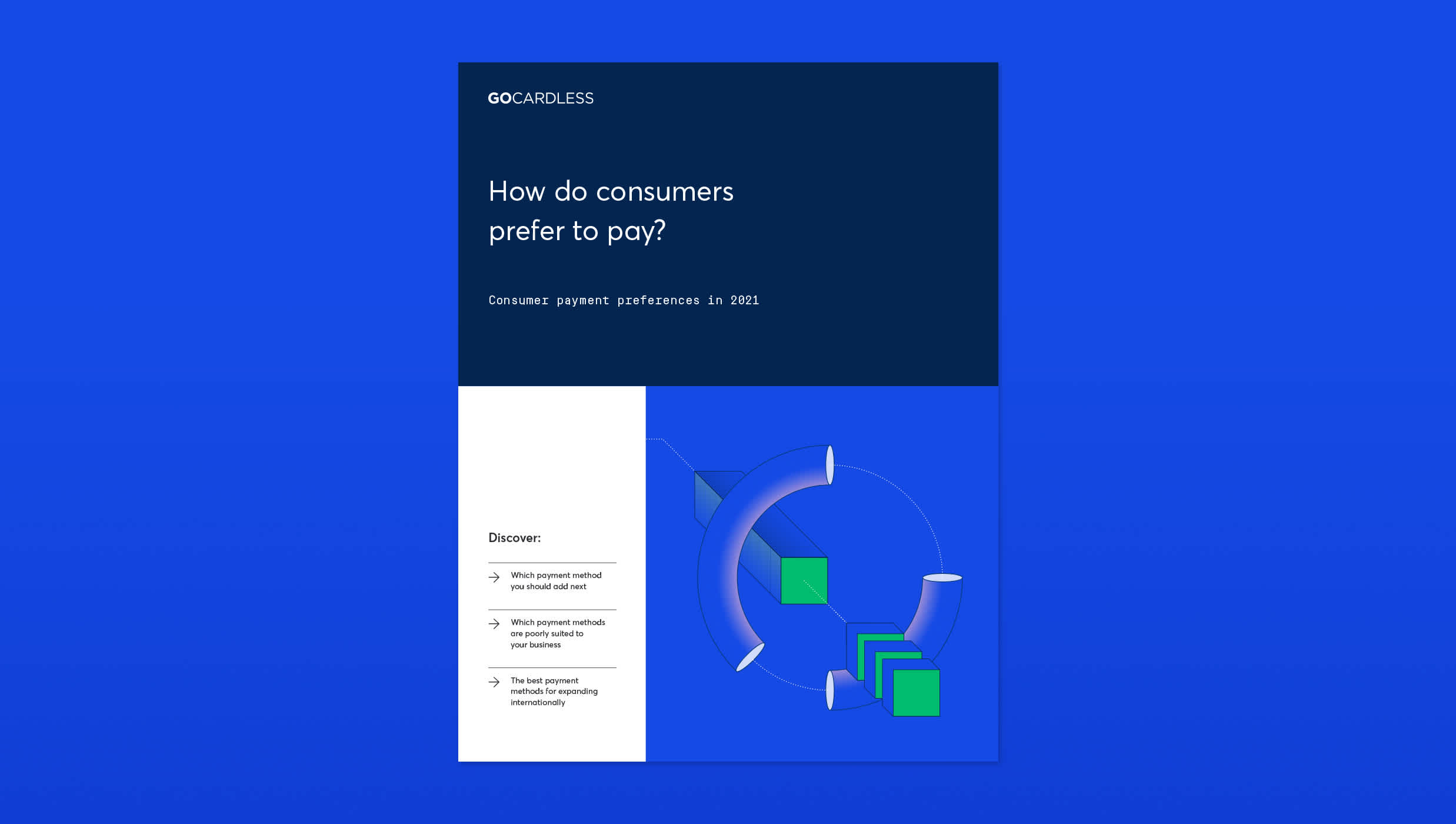5 key findings on how consumers choose to pay

Last editedOct 20223 min read
GoCardless recently partnered with YouGov to survey over 15,000 consumers across the US, Canada, UK, France, Germany and Australia to understand consumer payment preferences. We asked consumers which payment method they preferred to use for four different use cases. The online survey was conducted between 14 December 2020 and 22 January 2021.
Consumer payment preferences in 2021
You can get detailed insights and a breakdown of the consumer preferences across household bills, traditional subscriptions, digital subscriptions and instalments from the report. For the key takeaways and additional industry context, read ahead.
Dive into the key takeaways:
The recurring payment method of choice: bank debit
Credit cards are divisive across the payments landscape
Cash is no longer king
Love for PayPal wavers
One size does not fit all
1. Bank payments are the fan favourite
From the YouGov research, bank debit (Direct Debit in the UK, SEPA Direct Debit in Europe), comes in first place by a significant margin in most use cases across the UK, France, Germany, New Zealand and Australia. Outside of these markets, bank debit tends to hold a strong second place, even in card-heavy North America (where bank debit is known as ACH debit).
Across all use cases and countries, bank debit consistently ranked in the top three preferred payments.
27% more consumers have access to debit cards or bank accounts (for bank-to-bank payments) than PayPal.
>2x as many consumers have access to debit cards or bank accounts (for bank-to-bank payments) than cheques.
As a popular payment method for recurring payments across the globe, why do consumers like bank debit?
The YouGov research identified the top three reasons consumers prefer bank debit:
Automation - knowing that payments will be taken automatically gives consumers peace of mind.
Ease of use - completing payments with bank debit is simple and takes fewer steps or time.
Widely accepted - bank debit is accepted by most or all businesses that consumers purchase from.
Ultimately people want quick, easy and simple payment experiences. Especially with widely accepted payment methods that they will already have access to and can be trusted.
2. Credit cards are divisive
The preference for credit cards by consumers varies from country to country. Spending on credit cards is predicted to grow across all types of payments (including one-off and recurring payments) in 2021, but this is expected to be less than inflation.
There is a generational gap too. Millennials (aged between 25 and 40) and Generation Z (aged between 18 and 24) tend to prefer debit, while older generations tend to prefer credit. On average, Millennial and Gen Z consumers have 14% fewer credit cards than adults over the age of 35. Millennials and Gen z are recognised as tech-savvy digital natives, with a preference for mobile and digital payment options, like mobile wallets and contactless cards.
As the younger generations, Millennials and Gen Z typically earn less than their older counterparts and are more likely to be debt-averse and budget-conscious, preferring debit-based methods of payment.
As a result of the pandemic, it became even more difficult for younger consumers to obtain credit cards. New credit card accounts fell by 65% during the pandemic. Because of the unpredictability of the pandemic, it became riskier for credit card issuers to issue credit cards, so they tightened the requirements. Credit card issuers issued fewer credit cards leaving many consumers having their applications declined.
In light of these knock-backs across the wider payments landscape, for recurring payments credit cards were also divisive. We found that credit cards, although popular globally, tended to hold second place in markets where bank debit wins. Loss, theft, and expiry put credit cards at a frustrating disadvantage for both the consumers and the merchants who use them.
3. Cash is no longer king
With the inconvenience of paying a recurring payment in cash, cash alongside cheques often ranked in the bottom two positions for preferred recurring payment methods across all use cases and countries.
With new payment methods and more secure technologies, we’ve gradually seen the decline of cash across all payments (both one-off and recurring). Taking COVID into account, which saw the globe embrace social distancing and reduced physical contact, the demise of cash was accelerated, maybe even permanently.
Of those surveyed by YouGov, most countries were not eager to return to pre-COVID levels of cash usage. The only exceptions being the US, where cash habits were mostly unchanged by the pandemic and Germany, where the most consumers (23%) showed eagerness to return to pre-COVID levels of cash usage.
4. Love for PayPal wavers
The number of PayPal accounts has steadily grown over the last 10 years. Although synonymous with digital wallets, PayPal saw an almost universal low preference in recurring payments across all the countries surveyed in our research. Often well below 10% of consumers nominated PayPal as their preferred payment method for recurring payments, with the only notable exception being Germany, where PayPal ranked consistently in the top three preferred methods.
5. One size does not fit all
It’s safe to say that having the right payment mix is crucial to winning and retaining customers. That mix will most likely include both bank debit and credit cards as no single payment method is universally preferred. By meeting consumer demand for payment methods, you offer a better customer experience and prevent customers from moving to a competitor that does offer the way they want to pay.


